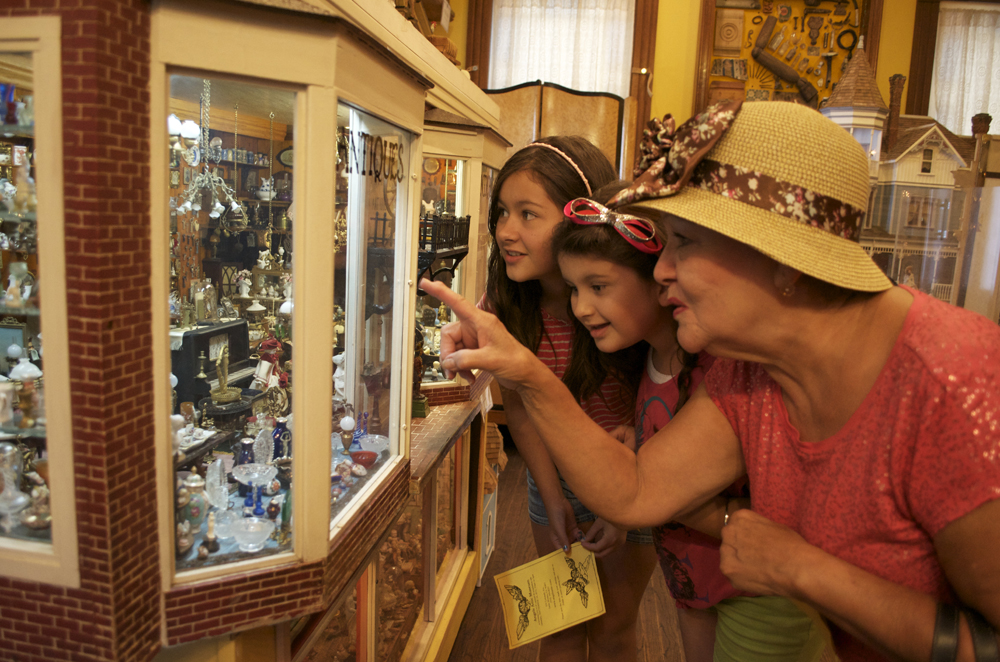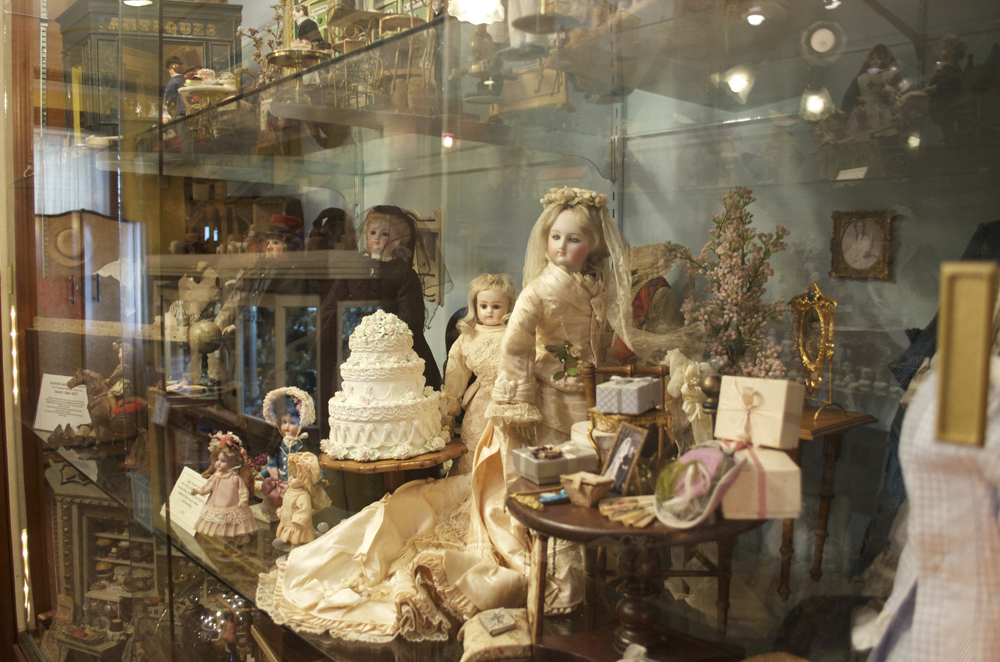
COLORADO AVENUE — Amidst the talk of future structural developments in Santa Monica, a marble covered angel statue guards the entrance to a Queen Anne Victorian house where historic architectural masterpieces abound — albeit in miniature.
Founded in 1948 by Jackie McMahan and the late Eleanor LaVove to express their passion for dollhouses and establish a nonprofit that benefits autism centers, the Angels Attic museum — near the corner of Fifth Street and Colorado Avenue — offers a unique family-friendly destination where visitors can step into a little world of contemporary and antique miniature toys.
Most of the museum's collections take visitors back to 19th century Europe; the golden age of toy making when intricate handmade dollhouses and dolls were reserved for well-off families as either playthings or educational tools to teach young girls how to run an estate.
One of the more notable pieces includes the fully furbished three-story Mexican Mansion from about 1890-1920, complete with its own working elevator and lights. There is even a replica of Versailles and a wooden shoe-shaped house fully occupied by the old woman who lived in a shoe and her numerous children from the popular nursery rhyme.
"This is a nice little time capsule for people to see," said Charles Phillips, museum director.
Phillips estimates that about 1,000-1,500 tourists and locals a year step into the Victorian's restored walls where they can appreciate and learn from an art form with historical significance.
Though he acknowledges the dominance of advanced technological gadgets over historic treasures in the popular sphere, the allure of the old miniature world continues today spanning across a wider range of ages and evolving with the times.
While Phillips argues that a large number of present-day children opt for electronic devices over toys like dolls and dollhouses that require more imagination to enjoy, at the 110th annual American International Toy Fair this past February, one of the hottest trends of 2013 included toys that possessed vintage or nostalgic value to children and adults alike.
In addition, the Toy Industry Association reported that dolls — the more contemporary kind — brought in approximately $2.69 billion in U.S. domestic sales in 2012 alone.
Looking to adult consumers, organizations like the National Association of Miniature Enthusiasts host annual conventions for artisans, collectors and dealers across the country and collaborate with similar international communities.
Nancy Robertson, a California state representative for the association, added that enthusiasts could successfully transform their hobbies of crafting or collecting into lucrative enterprises.
Artisans can pay around $800 or more to attend workshops led by essentially miniature world-celebrity artisans who are masters at their craft, Robertson said.
Lori Kagan-Moore, curator for the Great American Dollhouse Museum in Kentucky, wrote in an e-mail that a 19th century Spanish Mansion dollhouse was auctioned off in 2005 for $192,500. She explained that age, condition, relative rarity and merit of original artistry are among the major factors determining high price tags for collectibles.
While there is money to be made in the miniature world, Phillips — whose fascination with miniatures stemmed from his wife's collections and his own work experience with design — said that most collectors, artisans and museum patrons mainly seek a connection to their childhood.
For Robertson, who is both an artisan and a collector, the miniature world offers her just that. Only now she finds she can bring her imagination to life by creating the sets and pieces she pictures in her head.

She explained that artisans work in varying scales, the more popular being the quarter scale (1/4 inch to 1 foot) for the time and space saved. Sometimes though, making several of the same item even on a quarter scale, such as a miniature bouquet of flowers, can take hours considering the time needed for paint and glue to dry.
Many artisans even adapt to new methods such as the latest trend of using laser cutters to form more intricate designs on wooden furniture pieces.
"Anybody can do it. You just have to have an interest in re-creating an event, a structure, or the feeling of an era," Robertson said.
For younger generations still working on creating nostalgic memories, the Angels Attic museum provides a foray into the larger miniature world that captivates adults all over the world while teaching a creative history lesson.
One of the museum's older dolls is dressed completely in black for mourning, offering an opportunity to learn how high-society women in that period would dress — as well as reveal how wealthy families spared no expense in purchasing dolls for rather specific occasions.
Each of the dollhouses also offer a peak into the day-to-day lives of those long past with Phillips making sure to arrange miniature figurines and furnishings accurately, sometimes taking months to get it right.
An integral component of the museum's charm and appeal to generations young and old, newcomers and experts is its re-mastered Victorian façade which plays its part as a piece of Santa Monica history.
"It's like a dollhouse full of dollhouses," Phillips said.

The two-story Victorian was originally built in 1895 and supposedly served as a boardinghouse for local workers, Phillips explained.
Ruthann Lehrer, Santa Monica landmarks commissioner, said that Victorian houses are a vanishing breed in the area with a few scattered about, most of which are one-story buildings.
"It's a unique asset, both the museum and the building itself," Lehrer said, "It adds to the character of the streetscape."
With construction on the Expo Light Rail just a few feet away from its doors, Phillips worries how the controversial transportation project will affect the museum's future.
"I hope [those in charge are] kind to us and leaves us alone," Phillips said.
He explained how as of now the museum is set to stay as per founder McMahan's wishes and he hopes to continue opening the door to curious passers-by and knowledgeable enthusiasts at what he calls the best job he's ever had.
If you go
Angels Attic
516 Colorado Ave.
Santa Monica, Calif.
90401
(310) 394--8331
www.angelsattic.com
editor@www.smdp.com









